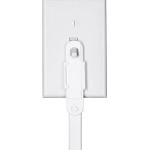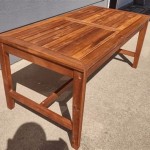Essential Considerations for Choosing Outdoor Paint for Plastic Furniture
Revitalizing and protecting your plastic furniture with the right outdoor paint can elevate your outdoor spaces. However, navigating the world of paint options and understanding the essential aspects is crucial to ensure a successful project. This comprehensive guide delves into the key considerations to help you make an informed choice.
Surface Preparation: A Key to Adhesion
Before applying paint, meticulous surface preparation is essential. Begin by thoroughly cleaning the furniture using a mild detergent solution and a soft cloth to remove dirt, grime, and oils. Allow the furniture to dry completely.
For optimal paint adhesion, sand the plastic surface lightly with fine-grit sandpaper or a sanding sponge. This will create a slightly rough surface, providing a better base for the paint to adhere to. Alternatively, use a plastic primer specifically designed to improve adhesion on smooth surfaces.
Selecting the Right Paint Type: Acrylic vs. Oil-Based
Outdoor paints for plastic furniture generally fall into two categories: acrylic and oil-based. Acrylic paints are water-based and offer quick drying times, easy application, and cleanup. They are also more environmentally friendly than oil-based paints.
Oil-based paints, on the other hand, are more durable and water-resistant, making them ideal for harsh outdoor conditions. However, they require longer drying times, emit strong odors, and are more difficult to clean up. Consider the durability and finish requirements of your specific project when making your choice.
Color and Finish Options: Expressing Your Style
Outdoor paints come in a wide array of colors and finishes to match your desired aesthetic. For a classic and versatile look, opt for neutral shades such as white, black, or gray. If you prefer a bolder statement, explore vibrant hues or consider adding patterns using stencils or painter's tape.
Regarding finish, choose between matte, semi-gloss, or gloss. Matte finishes provide a subtle, non-reflective look, while semi-gloss offers a balanced sheen and durability. Glossy finishes create a high-shine, reflective surface that is easy to clean but may show scratches more prominently.
Additional Essential Aspects
Beyond the primary considerations, several additional factors can enhance your outdoor paint project:
- UV Resistance: Choose paints with UV-resistant pigments to protect against sun damage and fading.
- Water Resistance: For outdoor furniture exposed to rain or moisture, select paints with excellent water resistance to prevent peeling or blistering.
- Mildew Resistance: Paints containing mildew-resistant additives help prevent the growth of mold and mildew in humid environments.
- Coverage: Determine the coverage area of the paint and purchase sufficient quantity to complete the project without running out.
By carefully considering these essential aspects, you can make an informed decision on outdoor paint for your plastic furniture, ensuring a successful project that will enhance your outdoor living spaces for years to come.

Best Paint For Plastic Our Outdoor Chairs 1 Yr Later

How To Spray Paint Plastic Chairs Marty S Musings

How To Spray Paint Plastic Chairs Furniture True Value Hardware

How To Spray Paint Plastic Chairs The Vanderveen House

How To Paint Plastic Patio Chairs Tastefully Eclectic

Architecture Of A Mom How To Spray Paint Plastic Outdoor Furniture

How To Paint Outdoor Furniture Evo Home Finishing

Easy Diy Spray Painting Plastic Chairs

How To Spray Paint Plastic Chairs And Outdoor Furniture

Best Paints For Plastic Furniture Painted Ideas
See Also








